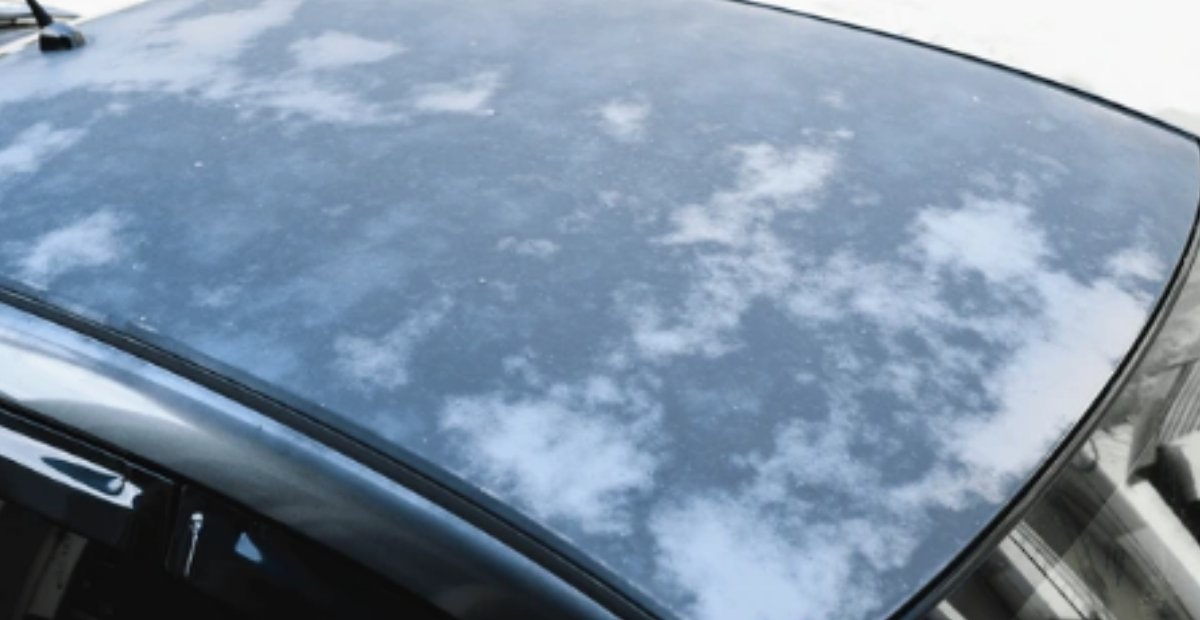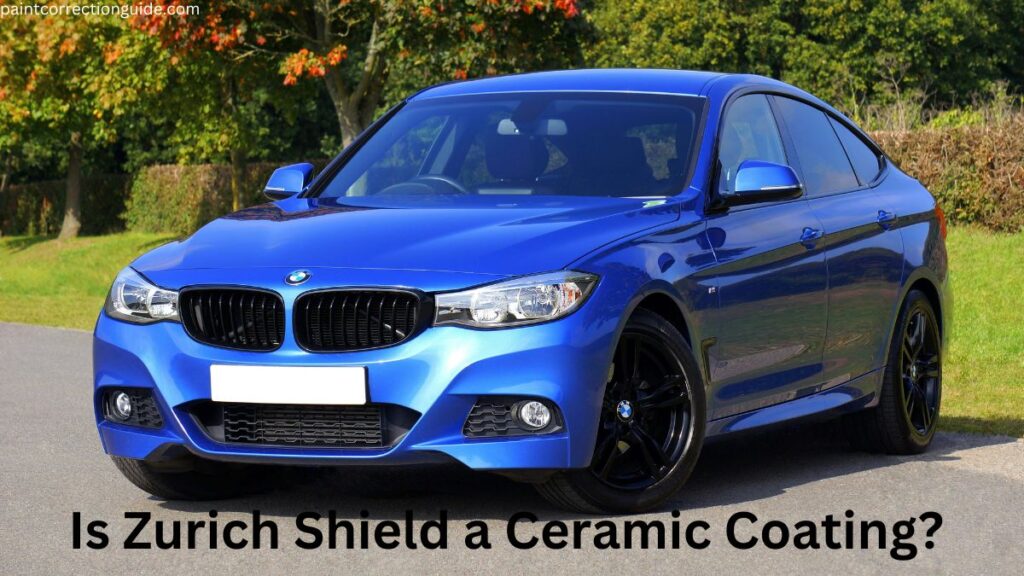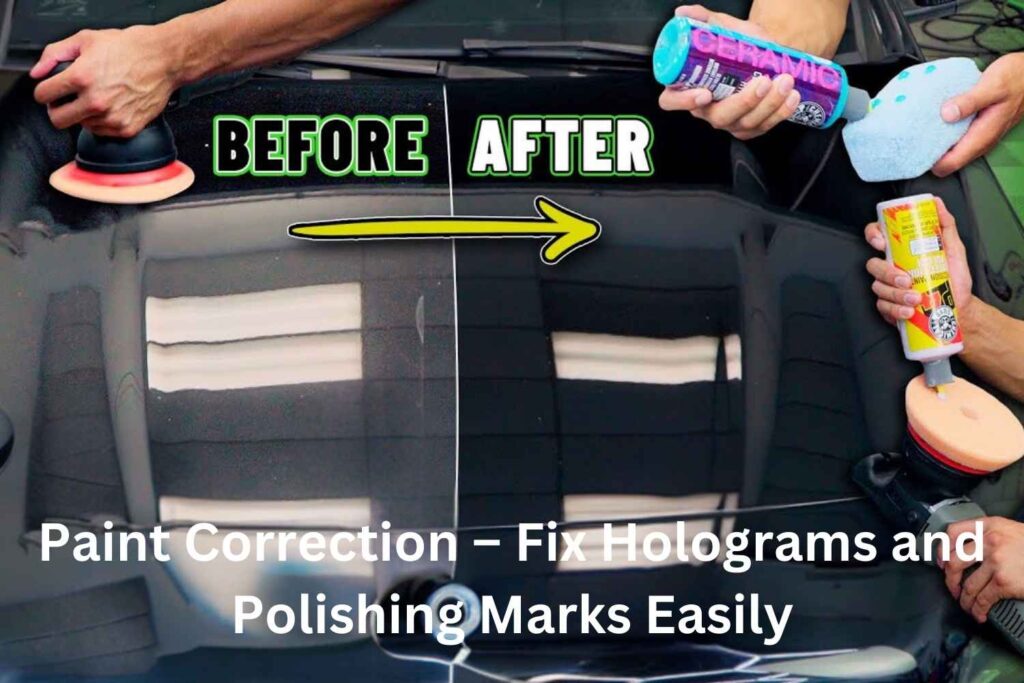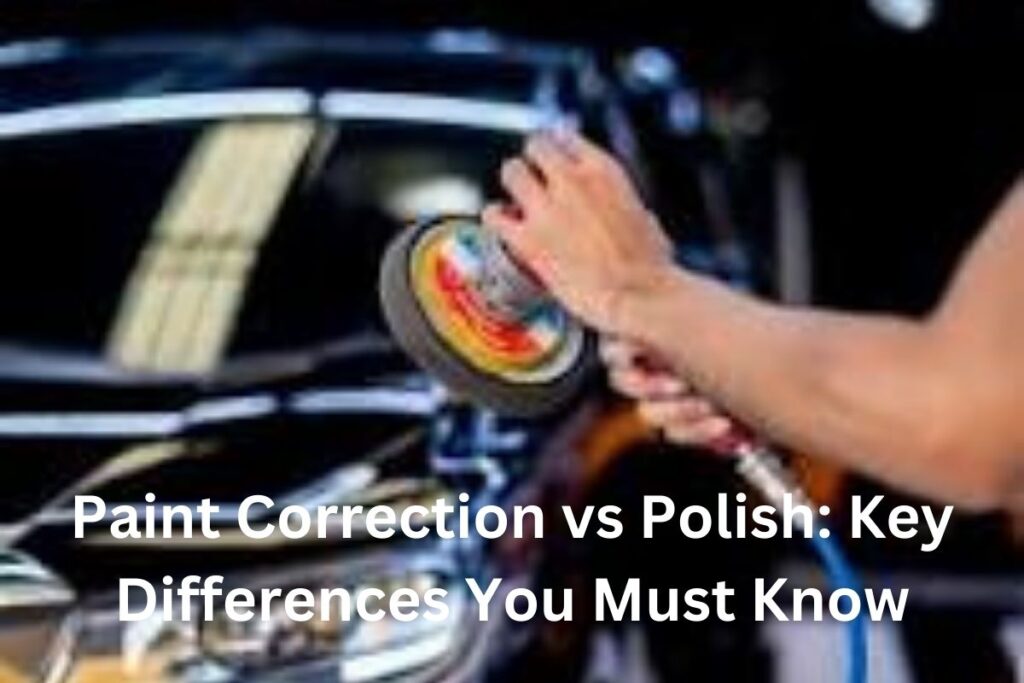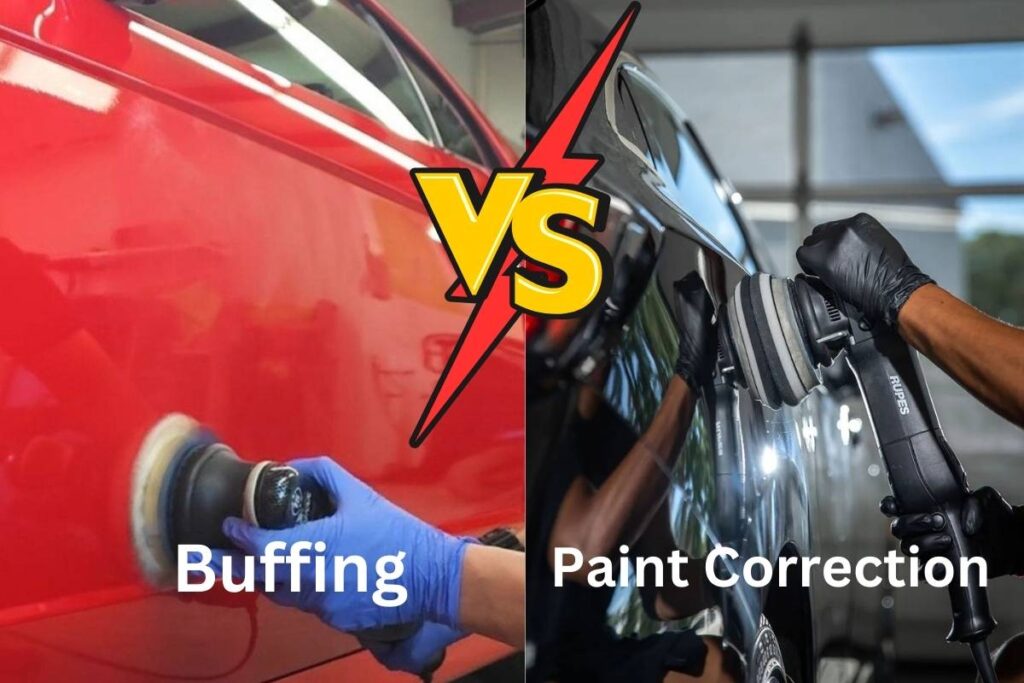Have you noticed your car’s paint looking dull or faded over time? Why does this happen even when you wash your car often? The answer is oxidation. Just like metal rusts, car paint can change when it’s exposed to air, sunlight, and other elements. But what causes this, and how can you stop it from making your car’s paint look old?
In this post, we’ll explore the common causes of paint oxidation. These include damage from UV rays, dirt buildup, and not caring for your car. By understanding these problems, you’ll learn how to protect your car’s paint and keep it looking new. Keep reading to find out how you can stop oxidation and keep your car’s paint shiny.
Table of Contents
ToggleWhat Causes Oxidation on Car Paint?
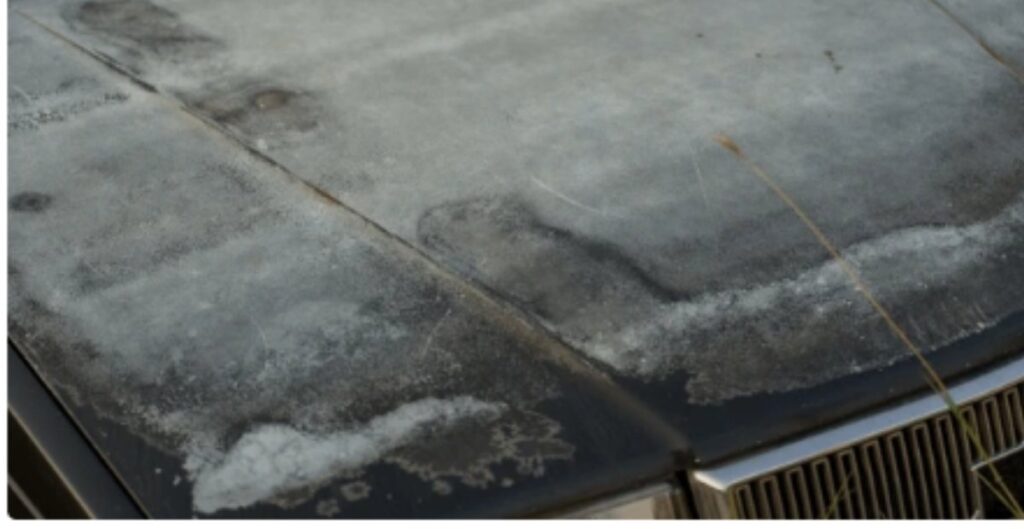
Oxidation happens when oxygen in the air reacts with the paint on your car. Over time, this reaction makes the paint dull and can even cause damage. Several things cause or speed up oxidation:
- Sunlight (UV Rays): The sun’s rays are one of the main causes of oxidation. The UV rays break down the paint, making it fade and lose its shine. Cars left in the sun without protection, like a car cover or garage, are at higher risk. So to stop this, park your car in the shade or use a car cover to block the sun.
- Moisture: Water from rain, humidity, or washing can also cause oxidation. If the protective layers of the paint wear down, water reacts with the paint. When the water dries, it can leave behind minerals or dirt that speed up the oxidation process.
- Pollution and Dirt: Pollutants from the air, like dust and industrial chemicals, can stick to your car’s paint. Some of these particles are acidic and can damage the paint over time. These pollutants, mixed with water, can create a harmful layer that wears down the paint faster.
- Salt: If you live near the ocean or in areas where salt is used on roads, salt can speed up oxidation. Salt is corrosive and can damage both the paint and the clear coat. It seeps into small cracks in the paint, leading to rust if not treated.
- Skipping Maintenance: Taking care of your car’s exterior is important. If you skip regular washing and waxing or don’t clean your car after it’s been exposed to harsh elements, the paint is more likely to oxidize. The longer dirt and pollutants stay on the paint, the more damage they can cause.
What are the Early Signs of Oxidation on Car Paint?
Catching oxidation early is important. It helps you stop the damage before it gets worse. Acting fast can save you time, money, and effort. Here are common signs that oxidation has started:
- Fading or Dull Paint: The first sign of oxidation is losing shine. The paint, once glossy, starts to look dull. The color may also seem less bright.
- Chalky Surface: As oxidation gets worse, the paint may feel chalky or have a powdery look. This is easier to see on dark-colored cars, but it can happen on any car.
- Rough Texture: When you touch your car, the paint may feel rough or gritty. If the surface isn’t smooth, oxidation has likely started. Healthy paint should feel slick and smooth.
- Water No Longer Beads: When your car’s paint is in good shape, water beads up after a wash or rain. If water no longer forms beads and spreads across the surface, it’s a sign that oxidation has damaged the protective layers of wax and paint.
What Does Car Paint Oxidation Look Like?
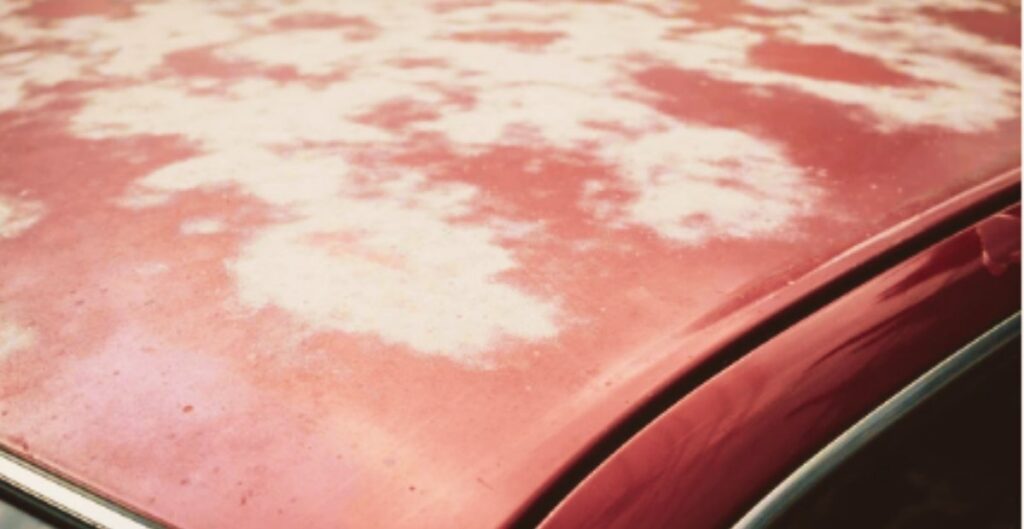
Oxidation looks different at each stage. Early on, the paint may just seem faded or dull. As it gets worse, the paint can look patchy, with uneven spots and discoloration. You may notice cloudy or chalky areas on the surface.
In later stages, the paint might start to peel or flake off. This can expose the layers underneath. When the clear coat fails, the damage can get worse quickly. If the base coat or primer is exposed, rust can form. This will cause more harm to the metal of the car.
How to Prevent Oxidation on Car Paint: Step-by-Step Guide
If your car shows signs of oxidation, it’s important to Prevent it before it gets worse. Here’s a step-by-step guide to help restore your car’s paint.
Step 1: Wash Your Car Thoroughly
The first step is washing the car. Use a pH-balanced car shampoo to clean the surface without removing the protective layers. Avoid using household cleaners like dish soap, which can strip away wax and sealant, making the paint vulnerable.
- Use a soft sponge or microfiber mitt to wash the car gently.
- Pay close attention to dirt, grime, or bird droppings.
- Rinse the car well with clean water to remove all soap.
Step 2: Use a Clay Bar to Remove Dirt
Even after washing, some dirt may still be stuck to the car. A clay bar helps remove these tough spots, making the surface smoother for polishing.
- Spray clay lubricant on the car’s surface.
- Gently rub the clay bar in small circles over each section.
- Wipe the area clean with a microfiber towel.
The clay bar helps smooth out rough spots caused by oxidation and dirt.
Step 3: Polish the Surface
Polishing helps bring back the shine by removing the oxidized paint layer and showing the fresh paint underneath. You can use a polisher or apply polish by hand.
- Use a car polish made for removing oxidation.
- Work in small areas, rubbing the polish in circles.
- For more severe oxidation, a stronger compound may be needed.
- After polishing, wipe the area clean with a towel.
This step is key to restoring your car’s original shine.
Step 4: Apply Wax or Sealant
After polishing, protect the paint with wax or sealant. This will block UV rays, moisture, and dirt from damaging the paint again.
- Apply a thin layer of wax with a foam applicator.
- Let the wax dry to a haze, then buff it with a clean towel.
- For long-lasting protection, use a ceramic coating.
Waxing regularly helps stop future oxidation and keeps the paint looking new.
Step 5: Buff the Car
The last step is to buff the car to make it shiny and smooth. Use a microfiber towel or a buffing machine to give the surface a glossy finish.
- Buff the car until it’s glossy and smooth.
This final step enhances the finish and makes your car’s paint look brand new.
Using Harsh Car Cleaning Products
It might be tempting to use household products like dish soap or harsh cleaners on your car, but they can cause more harm than good. These strong cleaners strip away the wax and protective layers from your car’s paint, making it more likely to oxidize.
Always use products made for cars. Look for pH-balanced soaps and cleaners that are gentle on the paint. Avoid using rough brushes or sponges that could scratch the surface and speed up oxidation.
When to Seek Professional Help for Paint Oxidation
While you can fix mild to moderate oxidation at home, there are times when you should seek professional help.
- Severe Oxidation: If large parts of your car’s paint look dull, chalky, or are peeling, it’s best to see a professional. Severe cases may need repainting or advanced repairs.
- Clear Coat Failure: If the clear coat is peeling, the damage goes beyond oxidation. You may need to reapply the clear coat or repaint the car.
- Lack of Time or Tools: If you don’t have the right tools, time, or skills, a professional detailer can do the job correctly without risking more damage to the paint.
Professional detailers offer services like polishing, waxing, and paint correction, which can fully restore even severely oxidized paint.
How Can You Maintain Your Car’s Paint After Fixing Oxidation?

Once you remove the oxidation, regular care is important to keep it from coming back. Here’s how to keep your car’s paint in good condition:
- Wash Regularly: Wash your car every two weeks to remove dirt, salt, and other things that can damage the paint. Use a soft cloth and mild car shampoo to avoid scratching or wearing down the paint.
- Wax Every 3-6 Months: Waxing regularly adds a protective layer to your paint. This keeps it safe from the environment. You can also use ceramic coatings, which last up to two years.
- Park in the Shade: Sunlight is a major cause of oxidation. Try to park your car in a garage or under shade to protect it from UV rays.
- Use a Car Cover: If you can’t park in the shade, invest in a high-quality car cover. It will protect your car from the sun, moisture, and pollutants.
- Inspect Your Car Frequently: Check your car’s paint often for signs of fading or roughness. The sooner you spot oxidation, the easier it is to fix.
- Avoid Harsh Chemicals: Use mild car care products that are safe for your paint. Don’t use household cleaners like bleach or ammonia on your car.
In Conclusion
Understanding what causes oxidation on your car’s paint is the first step to preventing it. In this post, we covered the main causes, like UV rays, dirt buildup, and poor car care. By spotting early signs such as fading paint, rough texture, or water not beading, you can stop oxidation before it becomes a big problem.
The good news is that there are simple steps to restore your car’s paint, like washing, polishing, and applying wax. Regular care, such as parking in the shade, washing often, and using gentle cleaners, will help keep your car’s paint fresh and shiny for years.
Now that you know what causes oxidation and how to prevent it, you can take action to protect your car. A little effort goes a long way in keeping your car’s paint looking like new.
Frequently Asked Questions (FAQs)
Will vinegar remove oxidation from car paint?
Vinegar is slightly acidic and can help with light oxidation. But it’s not the best choice. If used wrong, it can make the paint look dull. It’s better to use car products like polish or a clay bar.
What is the best compound for oxidized paint?
The best products to fix oxidized paint are polishing or rubbing compounds. Some good choices are Meguiar’s Ultimate Compound and 3M Perfect-It Rubbing Compound. They help bring back the shine and remove oxidation.
How do you fix sun-damaged paint on a car?
First, wash the car well. Then, use a clay bar to get rid of any stuck dirt. After that, use a polishing compound to remove oxidation. Finally, add a coat of wax or sealant to protect the paint from future damage.
Does WD-40 remove oxidation on car paint?
WD-40 can make oxidized paint look shiny, but it doesn’t remove oxidation. It works as a temporary fix, not a permanent one. For better results, use car polish or a rubbing compound.
How to stop oxidation on car paint?
To stop oxidation, wash and wax your car often. Use UV-protection products and park in the shade or use a car cover to avoid too much sun. Reapply wax or a ceramic coating every few months to keep the paint sealed.
How to remove oxidation from car paint by hand?
Start by washing the car well. Then, use a clay bar to remove dirt. After that, apply a polishing or rubbing compound by hand. Rub in small circles with a microfiber cloth until the paint shines again. Finish with wax or sealant to protect the paint.

